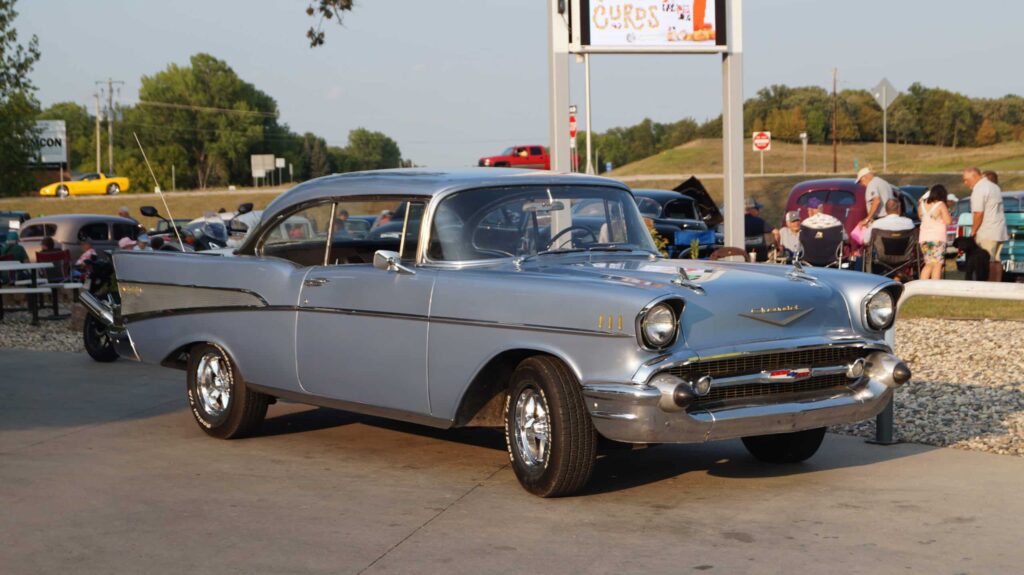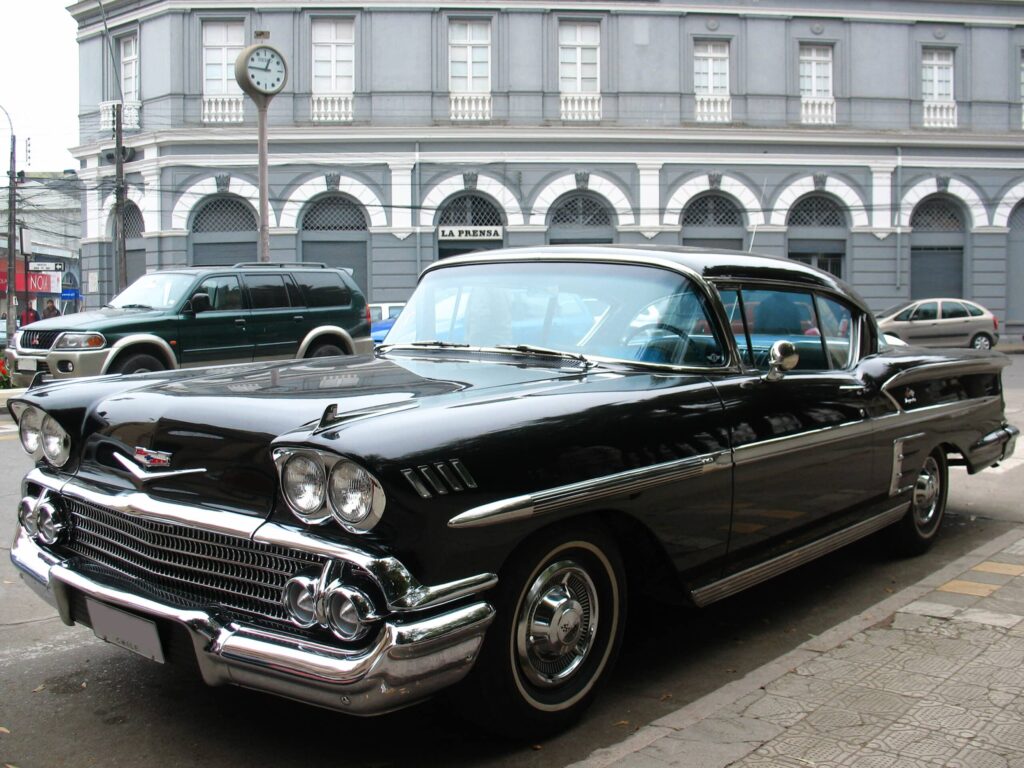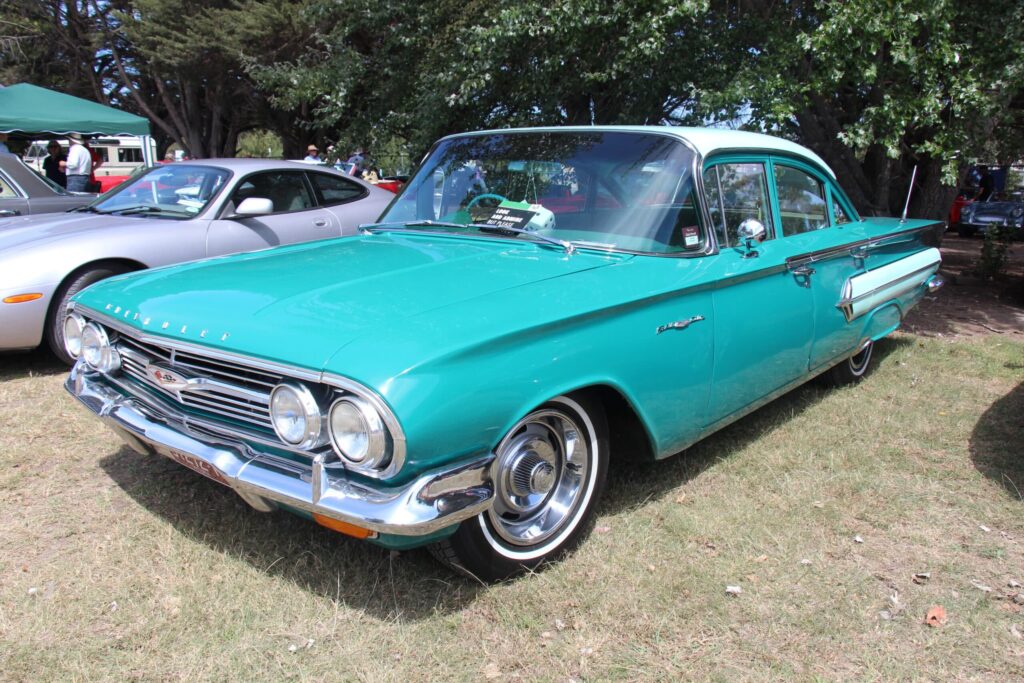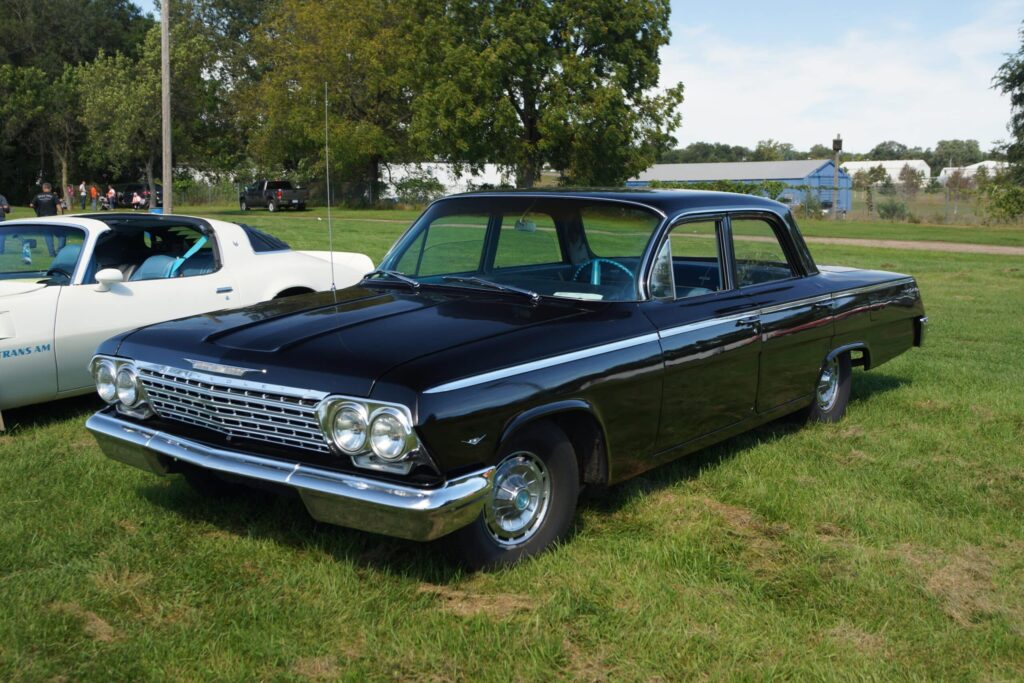Every decade has its icons, something most people will first associate with that period when it is mentioned. In the crazy 70s, we had Saturday Night Fever and the legendary Lamborghini Countach. The 60s were heavily influenced by the space race astronauts’ favorite car – the Corvette. And for the 50s, that’s Rock’n’Roll and, of course, Chevrolet Bell Air. This iconic car had several highly recognizable versions, whose popularity consequently outgrew it and became a part of pop culture. But in reality, Chevrolet Bel Air was manufactured for three decades, during which time eight of its generations swop places. And in this article, we’ll go through each of them and see which are the most noteworthy.
The idea behind the Chevrolet Bel Air
Undoubtedly, Chevrolet is one of the makes that helped motorize the US, especially in the post-war period. Since its beginnings, this Detroit-based manufacturer has made practical models that have offered excellent value for money. And for years, their cars were designed with an average American family in mind to suit their needs and budget. Chevrolet was to the US, in a way, what Volkswagen was to Germany or Fiat to Italy.
The situation was starting to change during the late 40s, which was the time car sales were going through the roof. But more importantly, an increasing number of future buyers wanted a car that is more than a way of transportation. Besides practicality and price, their focus started shifting towards things such as fun and excitement. Chevrolet’s response to this new trend came in the form of several new vehicles, with Bel Air being one of them. The idea behind it is simple – take a big and spacious car, put a big engine in it, and equip it with a selection of luxurious features. Executives at Chevrolet were hoping to attract buyers who wanted an exciting and engaging vehicle backed up with a reputable and well-proven badge. But they couldn’t predict that with the Bel Air, they were setting the foundations for the new type of vehicle – the muscle car.
The first Chevrolet Bel Air
Initially, Bel Air was introduced in 1949 as an upscaled, 2-door hardtop version of Chevrolet’s popular Fleetline and Styleline sedans. This is why these cars had an almost identical front end, with the roof line and the silhouette being the only notable differences. But as the new Bel Air, which owed its name to a wealthy and colorful Los Angles suburb, became popular among buyers, Chevrolet turned it into a separate model. As a result, cars from 1953 onwards were available in several more body shapes. In addition to a 2-door coupe and convertibles, there were also 4-door sedans and even a station wagon. These revamped models also received many design updates, such as a one-piece windshield or cromes strips.

Under the metal, Bel Air shared most of the mechanics with its siblings, Fleetline and Styleline models. At first, the engine was an aging Thriftmaster 3.5-liter six-cylinder that produced modest 92 horsepowers. Later during production, an updated variant, called the Blue Flame, was added to the range. This 3.9-liter engine incorporated various modern engineering solutions and had 115 horsepower on the tap. As for the transmissions, buyers could choose between a 3-speed manual and a 2-speed Powerglide automatic. In addition, the car had an independent front suspension, which was unusual and progressive at the time.
Chevrolet Bel Air’s second generation
For the 1955 model year, Chevrolet released the second iteration of the successful Bel Air. The new car was completely restyled, with the Ferrari-inspired front grille being the most notable detail. The opinions about this feature were heavily split among the buyers, so it gave way to a more conventional grille in the later years. The selection of available body styles was similar to those its predecessor offered, with the addition of a 2-door station wagon. In a way, this is one of the most iconic American cars ever made, and it’s probably impossible to find an automotive enthusiast who wouldn’t recognize it. And if it wasn’t popular enough on its own, its appearance in the American Graffiti movie made it immortal.

The new Bel Air shared many mechanical underpinnings with the car it replaced, including the chassis and suspension. Engines and transmissions were also carried over, although two more powerful V8s were added. The bigger of the two was one of the first engines to receive a mechanical fuel injection, known as Ramjet. In addition, top-end models could be ordered with an optional air-conditioning system. Besides the attractive looks, the new car was praised for its performance and overall handling.
Third-generation Chevrolet Bel Air
In 1958, just three years after introducing the popular second-gen Bel Air, Chevrolet came up with its replacement. The upcoming model was significantly different and had only a few similarities with the outgoing one. Among features that made it distinctive, a lower, longer body line and quad headlights are the most noticeable. Initially, the station wagon was dropped from the lineup, only to reappear later on as a separate model called Nomad. The car was well received by buyers, consequently becoming Chevrolet’s best-selling model of the time.

As for the mechanics, there were no significant changes over the old car, with most of the components remaining the same. The old Thriftmaster 3.5-liter six-cylinder was no longer available, and a big block V8 became an option. Lastly, the new Bel Air was one of the first Chevrolets to use an updated chassis, called Safety-Girder, which was lighter and more rigid.
Bel Air’s iconic fourth generation
The third generation Bel Air was short-lived, as it was replaced by a succeeding model in 1959. Despite having a share of similarities with the outgoing car, the new Chevy introduced an entirely new design language. This included a redesigned front grille with top-mounted scoops and uniquely shaped tail lights. As a matter of fact, those flat rear fins are one of the most iconic automotive shapes of the early 60s. Sadly, this was the first generation that had no convertible or station wagon as an option.

While the outside received significant updates, the situation underneath it remained almost unchanged. Still, this was no surprise, as there was no need to interfere with reliable and well-proven mechanics. As the only notable improvement, the Safety-Girder X-frame was revised to accommodate larger chassis and increase side-impact protection.
Fifth-generation Bel Air
With the fourth-gen Bel Air being well received by buyers, it was only natural for Chevrolet not to change the recipe too much for its successor. As a result, the new car was a subtle and well-balanced refinement of the model it replaced. The most notable difference was at the back, where a familiar cat’s eyes gave way to round tail lights. Furthermore, this model reinstated the practical and spacious station wagon as a body variant.

At the beginning of production, fourth-gen Bel Airs had the same engines as their predecessors. But with time, these cars received several brand-new units, including a freshly-designed straight-six and a big, 6.7-liter V8 that developed up to 425 horsepower. There were no changes in transmission options when compared to the outgoing car, either.
Bel Air’s sixth generation
In 1965, the sixth generation of Chevy’s bestseller was presented to the public. This new car was restyled from the ground up, adopting more aggressive and sharp body lines. It also grew in size, with the length of the vehicle surpassing 210 inches for the first time. The choice of body shapes was reduced to sedans with either two or four doors and a station wagon. The later ones could have been equipped with optional third-row seats, ensuring accommodation for up to nine passengers.

Under the hood, this Bel Air model had several drivetrain options. Besides a pair of in-line 6-cylinder engines, there was a lengthy list of different V8s, with the biggest one having a displacement of 7.0 liter. Transmission choices included three and four-speed manual gearboxes and a pair of automatics. In general, these cars offered decent performance and more than acceptable fuel economy for the time.
The last Bel Air generation in the US
When the seventh generation of the Bel Air was introduced in 1970, the sales of large sedans were in freefall. To compensate for this, Chevrolet focused on fleet customers as a primary market for their new car. Its aim was to be a more affordable alternative to Caprice and Impala, with whom it shared the overall design. This included sharp edges and a boxy body shape, among other details. Like its predecessor, the new Bel Air was available as a sedan or a station wagon with up to nine seats.
All available engine and transmission options were carried over from the outgoing models, although in a reduced range. At its time, the Bel Air was the last American full-size car to offer a manual gearbox. Other under-the-skin updates included gauges that displayed momentary fuel consumption and bumpers resistant to low-speed impacts.
And while Caprice thrived in the fleet-market role as typical police or taxi vehicle, Bel Air didn’t fare that well. As a result, Chevrolet decided to kill it off in 1970 and focus on its more upscale and better-selling siblings. Still, Bel Air was available in Canada, as an eighth-gen model, for a few more years.
Chevrolet Bel Air as a collectible car
Being an icon of its period, Chevrolet Bel Air is very popular among automotive enthusiasts and collectors. Still, there are differences between model years, as not all of them are in high demand. For example, second-generation cars are, and probably always will be, desirable. On the other hand, later models are popular as urban cruisers and are often converted into low-riders. But for most experts, third-gen cars are the pinnacle of the Bel Air range, which makes them the most expensive. Depending on the condition, these cars sell for anywhere between $20,000 and $150,000.
Chevrolet Bel Air – in short
As one of the Chevrolets’ most popular vehicles, Bel Air was in production between 1950 and 1981. During this period, the car was revamped several times, resulting in eight distinctive generations. Some of them, such as second and third-generation models, have become icons of the 60s and Rock’n’Roll. Sure, Bel Air went out of production during the 80s. But its heritage still lives on in halo vehicles it spawned, such as Chevrolet Impala.





